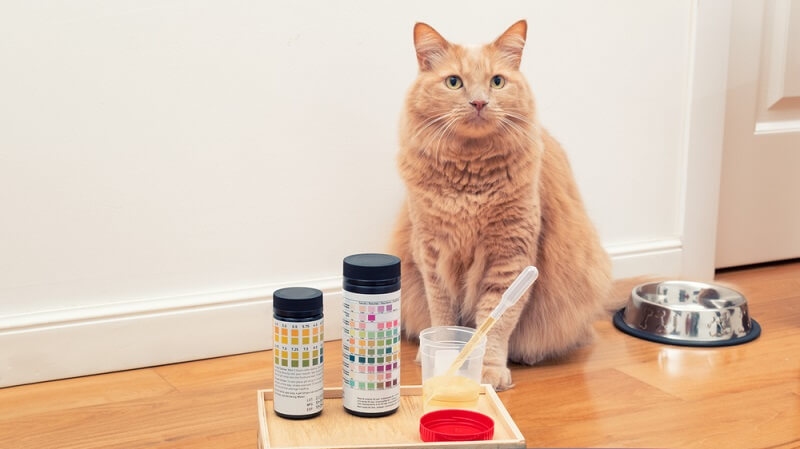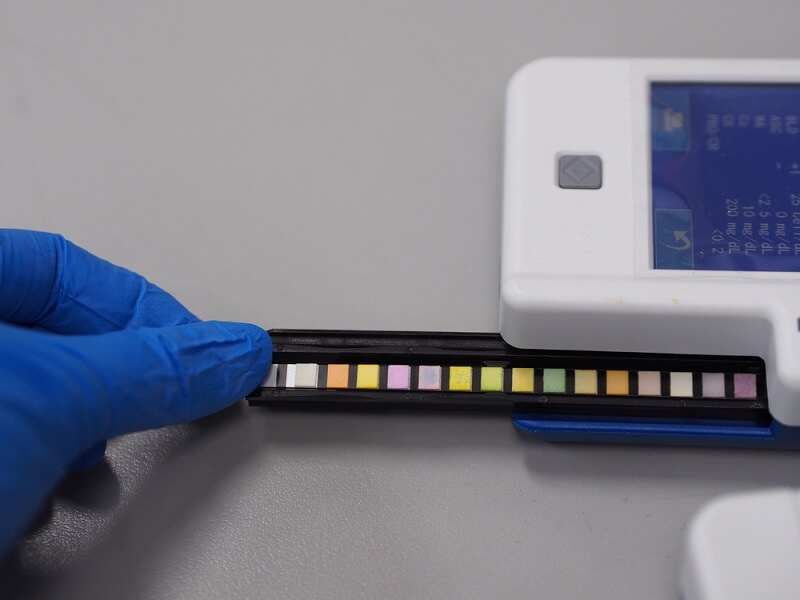
If you’ve ever seen your cat crouch in the litter box, straining and looking miserable, you know how worrying it is. They can’t tell us what’s wrong, so we’re left guessing. And more often than not, the issue turns out to be a cat urinary tract infection.
It’s painful, it’s stressful, and if it’s left untreated, it can be dangerous. But here’s the thing: once you know the warning signs and understand how to keep these infections at bay, you’ll feel a lot more in control. Let’s talk about what to watch for, what causes them, and how to keep your furry friend comfortable.
Simply put, a UTI in cats is when bacteria sneak into the bladder or urinary tract and cause irritation. Think burning, urgency, discomfort. But unlike us, cats can’t say, “Hey, it stings when I pee.” They just change their behavior, and it’s up to us to notice.
Sometimes, though, what looks like a UTI isn’t one at all. It might be crystals, stones, or a condition like feline idiopathic cystitis. That’s why guessing at home isn’t enough—a vet visit is the safest way to confirm.
Knowing the UTI symptoms in cats is half the battle. They might not always scream “something’s wrong,” but there are subtle signs:
If you’re seeing this, it’s not a behavior problem. It’s pain. Cats don’t pee on the rug out of spite—they do it because the box now feels like a torture chamber.
This brings us to cat litter box issues UTI. One of the biggest giveaways is when your cat suddenly starts avoiding the box. Imagine if every trip to the bathroom burned—would you want to go back? Probably not.
So when your cat squats on the carpet or the bed, it’s not rebellion. It’s desperation. They’re trying to pee, but it hurts. That’s your cue to call the vet, not scold them.

A handful of things can make a UTI more likely:
You can’t control everything, but you can make choices that lower the odds.
Now, about natural remedies for cat UTI. People love to ask if cranberry extract works for cats. The truth? Sometimes it helps, sometimes it doesn’t. What does help: upping water intake, feeding wet food, or sneaking extra moisture into meals. A cat fountain can do wonders—they prefer moving water.
These remedies are great for prevention or mild support, but let’s be clear: if your cat is already straining, bleeding, or crying, home tricks won’t cut it. That’s vet territory.
This is the tough one—because yes, vet visits cost money. But vet treatment for cat UTI is non-negotiable if the infection’s active. The vet will test urine, maybe take an X-ray, and prescribe antibiotics if needed.
It sounds like a hassle, but untreated UTIs can spread to the kidneys or cause dangerous blockages (especially in males). And once you’ve seen a cat in crisis from a blockage, you’ll never risk waiting again.
So, how do you stop it from happening again? Preventing recurrent UTIs in cats takes consistency:
It’s not about perfection—it’s about making things easier on their system. Stack enough of these habits together, and you lower the odds of another infection.
Diet is huge. Dry-only cats often don’t drink enough, which makes their urine concentrated and bacteria-friendly. Adding wet food or mixing the two makes a big difference. Some cats even like broths (unsalted, of course).
And then there’s water. Bowls are fine, but fountains are better. Cats love running water—it taps into their natural instincts and gets them to drink more.
One thing people overlook? Stress. Cats are more sensitive than they let on. A noisy environment, new pet, or even a shift in your schedule can mess with their bladder health.
Regular playtime, scratching posts, and cozy hideaways help. A calm cat is less likely to have urinary issues—it’s as simple as that.
Not everyone can afford prescription diets and constant vet visits. That doesn’t mean you can’t help. A few budget-friendly moves:
These small shifts make a real impact, and they don’t cost much.
A quick PSA: don’t give your cat leftover human antibiotics. They can be toxic. Don’t assume the infection will “clear on its own.” And don’t punish your cat for accidents. None of these help—and some make things worse.
If your cat gets UTIs more than once, you’ll need to stay on guard. It means being the kind of pet parent who watches their litter box habits, keeps up with vet visits, and makes hydration a daily priority.
It’s a little extra effort, sure, but once you’re in the routine, it’s just part of life. And nothing feels better than seeing your cat happy and pain-free again.
A cat urinary tract infection isn’t the end of the world, but it’s not something to ignore either. The earlier you spot the signs, the easier it is to treat—and the less pain your cat has to go through.
Cats don’t whine about their problems. They show us in small ways—avoiding the litter box, crying when they pee, hiding when they’re uncomfortable. Our job is to notice and respond. With a mix of vet care, prevention, and a little lifestyle tweaking, you can keep your cat comfortable and safe from recurring infections.
At the end of the day, that’s all they really want: comfort, security, and a human who pays attention.
This content was created by AI